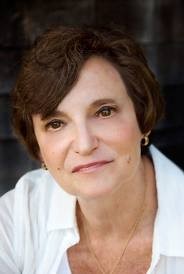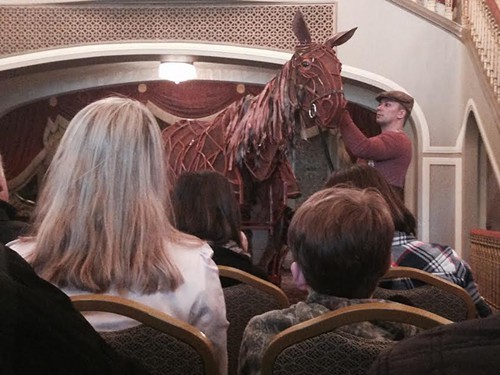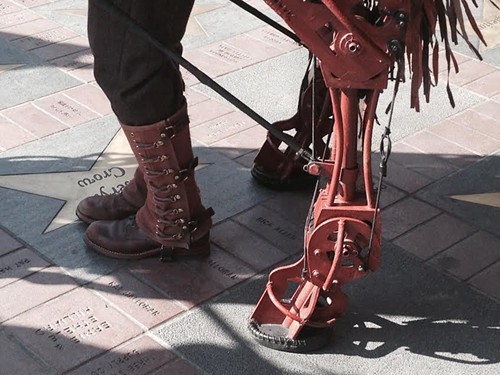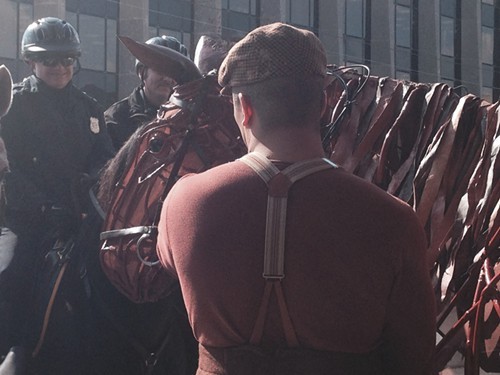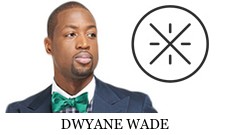The tattoo on the shoulder of Megan Fox quotes from it. The classes headed by Kenneth Adelman are inspired by it. And ad men everywhere continue to play off it — “it” being the work of playwright William Shakespeare.
No matter that Fox’s tattoo doesn’t quote quite correctly (or borrow meaningfully) from King Lear, that it’s odd to think of Hamlet as a lesson in crisis management (though Adelman thinks otherwise), and that “2B or not 2B” isn’t exactly existential. (It’s actually the clever tag line to an airline ad: Reserve your seat electronically!)
What does matter, in this day and age: You want an all-purpose cultural upgrade? Shakespeare, after nearly 400 years, is still your go-to guy — or guys. And Kenneth Adelman knows it. His teaching company is called Movers & Shakespeares. “Shakespeares” is right.
[jump]
“Shakespeare is in a way always two playwrights, not one: the playwright of his time … and the playwright of our time, whatever time that is. The playwright of now,” writes Marjorie Garber in the introduction to her major study of the plays, Shakespeare After All. But that one book certainly isn’t all.
Garber, professor of English and of visual and environmental studies at Harvard, is the author of, so far, 17 books, and those books do more than examine Shakespeare and his works, in his time or our time but always brilliantly. They consider, for example, The Use and Abuse of Literature, Bisexuality and the Eroticism of Everyday Life, and Academic Instincts. And in the closing chapter of another, Loaded Words, she considers the humanities as taught and as to their future.
Which brings us to the immediate future and “Occupy Shakespeare: Shakespeare and/in the Humanities,” the title of the lecture, free and open to the public, that Marjorie Garber is delivering inside Hardie Auditorium at Rhodes College on Thursday, March 27th, at 7 p.m.
Garber is Rhodes’ 2014 Phi Beta Kappa Visiting Scholar, a visit co-sponsored by a number of the school’s departments and programs, including its Pearce Shakespeare Endowment and Phi Beta Kappa chapter (a chapter recently rated, for the second year in a row, one of the top chapters in the country).
Scott Newstok, associate professor of English and Shakespeare scholar, is also president of Phi Beta Kappa at Rhodes. And not only does he know the work of Marjorie Garber well, he knows her well too. She was his graduate school adviser, and he first taught under her guidance. “She’s a dynamic speaker, I can gladly attest,” Newstok wrote in an email. And he added in a later email:
“While Marjorie Garber is widely recognized as a prolific writer and public intellectual, I also know her as a thought-provoking teacher. Herself a graduate of a small liberal arts college (Swarthmore), Garber has always cherished the intellectual intensity of the seminar.
“Her commitment to what I’ve taken to calling ‘close learning’ was evident not only in her courses but also in her work as director of Harvard’s Humanities Center, where she was an incisive interlocutor in dozens of crossdisciplinary seminars. She modeled what it means to be restlessly questioning — a trait that also characterizes her writing.
“This semester I’ve had the pleasure of assigning her Shakespeare After All to my Rhodes students. This volume takes me back to Garber’s teaching, for her essays on the plays were based on her popular lecture series — the first course for which I taught in graduate school.
“When Newsweek magazine named Shakespeare After All one of the five best nonfiction books of 2004, they praised it as ‘the most exhilarating seminar room you’ll ever enter.’ To invoke Garber’s own praise of the humanities, she is ‘good to think with.’”
Her writings are also a pleasure to sit down with and seriously think through. But little did I know until I learned it from Marjorie Garber: the Shakespearean ties to Megan Fox’s tattoo (described in Garber’s Shakespeare and Modern Culture), to Kenneth Adelman’s coursework in corporate leadership (in Loaded Words), and to an in-flight airline magazine’s “2B” campaign (in Shakespeare After All). There’s even some Shakespeare to go with Garber’s pet project, Dog Love. That’s also where you’ll read of a stray named Bailey. His onetime owner: former Tennessee governor Don Sundquist. •
